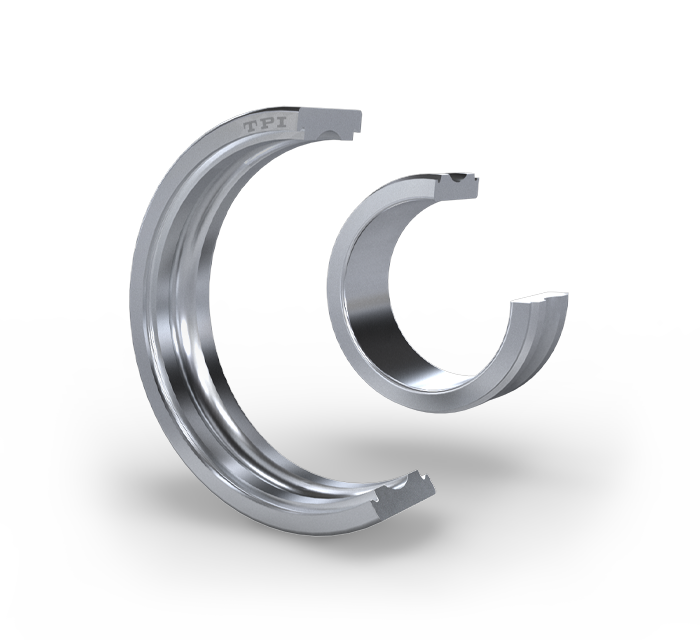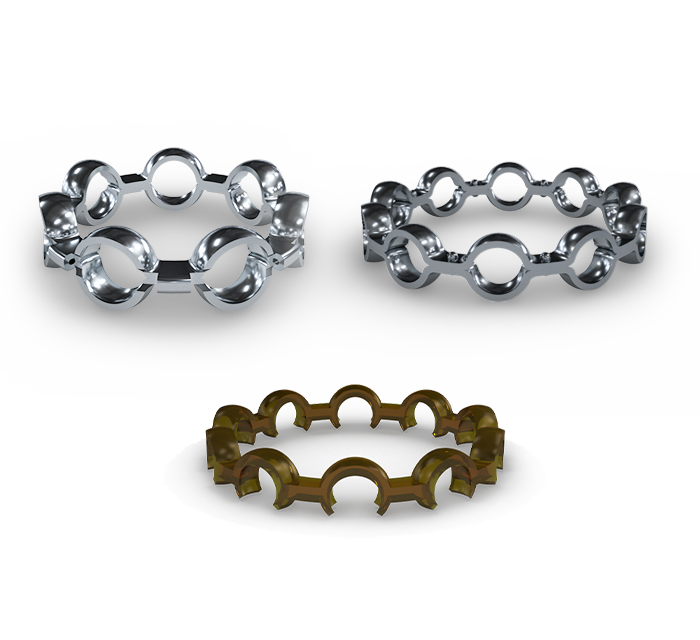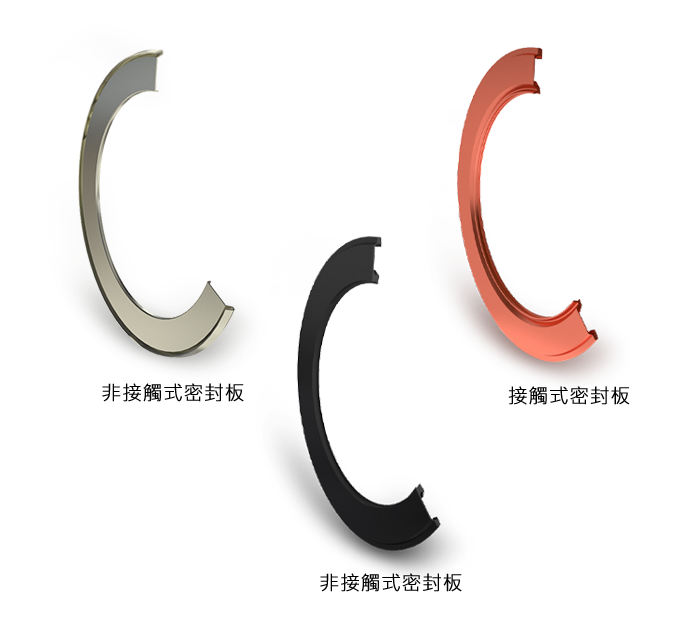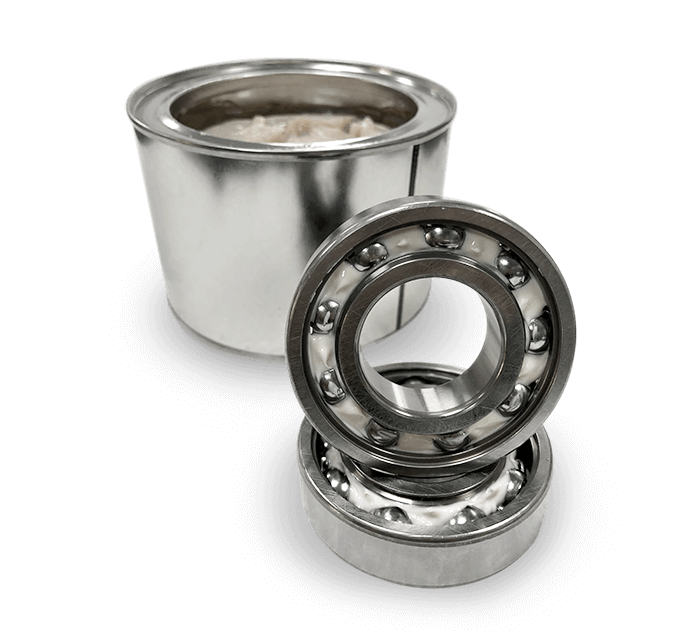Products
Design
Deep groove ball bearings are widely used in many industries for decades. A deep groove is formed on each inner and outer ring of the bearings enabling them to sustain radial and axial loads or even combinations of both. As the leading deep groove ball bearing factory, TPI Bearings owns abundant experience in designing and producing this type of bearing.
Inner and outer rings
Standard bearing steel with a content of carbon and chromium was selected and hardened to withstand the intense pressure between the rolling elements and bearing rings.
Carbonitriding on both inner and outer rings is a basic hardening process for TPI deep groove ball bearing factory. Through this special heat treatment, hardness on the raceway surface is increased; which reduces wear accordingly.
Ultra-clean steel is available in some product series from TPI ball bearings suppliers now, higher wear-resistance is obtained accordingly. Since contact fatigue is often caused by hard non-metallic inclusions, deep groove ball bearings nowadays require exceptional levels of cleanliness.
Rolling element
Steel balls with up to G3 grade ensure TPI deep groove ball bearing factory has the best stability and this also reflects in bearing performance under high speed rotation.
Ceramic balls is an additional option, when it comes to severe operating conditions. Extreme high speed rotation, heavy-duty applications and high heat generation while operating are some stiuations that ceramic balls can definitely help.
Cage
General cage designs for deep groove ball bearings and characteristic separately as below,
Pressed steel riveted cage, the most common design for a deep groove ball bearing. Widely used in bearings operating at dmN number under 350,000.
Pressed steel ribbon cage, normally used in bearings with smaller sizes, such as 608 or even smaller bearings.
Plastic snap cage, with lighter weight and lower heat generation, this nylon cage is perfect for bearings operating at dmN number above 350,000 and beneath 650,000, which is pretty much sufficient for deep groove ball bearings.
Seal
Two types of seals, contact and non-contact, were well designed by TPI precision roller bearings to effectively reduce the external dust entering the bearing while rotating.
Contact seal, prevent dust and liquid contamination from getting into the bearings. However, the torque will be higher and the limiting speeds will be lower under such application.
Non-contact seal, provide a general protection for the bearings. It cannot prevent liquid contamination from getting into the bearings. Torque and limiting speeds are same as the open type.
Grease
TPI deep groove ball bearing factory cooperates with the best grease manufacturers in the world which allows us to suggest and apply the best lubricating selection for our customers.
Life
Bearing life is usually expressed as the number of hours an individual bearing will operate before material fatigue develops on either the raceways or the rolling element. The usual life rating for industrial applications is called “L10” life. The L10 life is the number of hours which that 90% of bearings will survive; or, conversely, 10% of bearings will have failed in the L10 number of service hours.
Designation
The designation indicates the form, size, precision, internal structure, etc. of the bearing, and it's shown as below:

| Code | Explanation | |
|---|---|---|
| Special application code |
F- | Stainless steel bearings |
| TS2- | Dimension stabilized bearings for high temperature use (to 160℃) | |
| TS3- | Dimension stabilized bearings for high temperature use (to 200℃) | |
| TS4- | Dimension stabilized bearings for high temperature use (to 250℃) | |
| CSB- | Special heat treated long-life bearings | |
| ESB- | Special heat treated and material extra long-life bearings | |
| EC- | Expansion compensating bearings | |
| AC- | Creep preventing bearings | |
| Cage | L1 | Machined brass cage |
| F1 | Machined steel cage | |
| G1 | Machined brass cage, rivetless | |
| G2 | Pin-type steel cage | |
| J | Pressed steel cage | |
| T1 | Phenolic cage | |
| T2 | Plastic cage, nylon or teflon | |
| Seal or shield | LLB | Synthetic rubber seal (non-contact type) |
| LLU | Synthetic rubber seal (contact type) | |
| LLH | Synthetic rubber seal (low torque type) | |
| ZZ | Shield | |
| LLE | Better water resistance synthetic rubber seal | |
| Ring configuration | N | Snap ring groove on outer ring (without snap ring) |
| NR | Snap ring on outer ring | |
| D | Bearings with oil holes | |
| Internal clearance | C2 | Radial internal clearance less than Normal |
| (CN) | Normal radial internal clearance, but not shown in nominal numbers | |
| C3 | Radial internal clearance greater than Normal | |
| C4 | Radial internal clearance greater than C3 | |
| CM | Radial internal clearance for electric motor bearings | |
| NA | Non-interchangeable clearance (shown after clearance code) | |
| Tolerance standard | (P0) | JIS standard Class 0 (ABEC-1) |
| P6 | JIS standard Class 6 (ABEC-3) | |
| P5 | JIS standard Class 5 (ABEC-5) | |
| P4 | JIS standard Class 4 (ABEC-7) | |
| P2 | JIS standard Class 2 (ABEC-9) | |
| Lubrication | 2AS | TPI grease code |
| L627 | ||
| 3ES | ||
| 5K | ||





